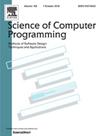Systematicity and generalizability in business process redesign methodologies: A systematic literature review
IF 1.4
4区 计算机科学
Q3 COMPUTER SCIENCE, SOFTWARE ENGINEERING
引用次数: 0
Abstract
Context
Business Process Management (BPM) plays a central role in helping organizations improve efficiency and service delivery, particularly in environments with rising demands and limited resources. Within this field, Business Process Redesign (BPR) has emerged as a way to rethink and restructure processes in response to continuous change. However, many existing BPR methodologies fall short—they lack methodological rigor and are often too narrowly tailored to specific industries or use cases.
Objectives
This study explores whether BPR methodologies are both systematically structured and broadly applicable across domains. It addresses three key questions: whether current approaches are methodologically grounded, whether they can be applied across diverse contexts, and what core elements are necessary to support both structure and generalizability in BPR design.
Methods
A systematic literature review (SLR) was conducted, applying an eight-step protocol to assess sixty-four primary BPR methodologies drawn from academic databases. Each methodology was evaluated against two sets of criteria: five indicators of systematic design (e.g., defined phases, interdependencies, evaluation checkpoints), and five indicators of generalizability (e.g., cross-domain adaptability, notation flexibility, heuristic support). A concept-centric synthesis was used to analyze the findings.
Results
Of the methodologies reviewed, thirty-eight demonstrated systematic features, while only eight met broader applicability standards. Only one methodology satisfied all ten criteria, revealing a notable gap in the field and a need for more balanced, reusable frameworks.
Conclusion
The study highlights a significant gap in the current BPR methodologies and presents the BPR Application Framework —a structured yet adaptable methodology that combines phase-based design with heuristic integration and notation-aware modeling. Compared with established references like BPM CBOK and Lean Six Sigma, it offers a clearer, more actionable path for practitioners and researchers seeking both rigor and flexibility in BPR.
业务流程再设计方法的系统性和概括性:系统的文献综述
上下文业务流程管理(BPM)在帮助组织提高效率和服务交付方面发挥着核心作用,特别是在需求不断增长和资源有限的环境中。在这个领域中,业务流程重新设计(BPR)作为一种重新思考和重构流程以响应持续变化的方法而出现。然而,许多现有的BPR方法都有不足之处——它们缺乏方法上的严谨性,并且常常过于狭隘地针对特定的行业或用例进行定制。本研究探讨业务流程再造方法是否具有系统的结构和跨领域的广泛适用性。它解决了三个关键问题:当前的方法是否基于方法,它们是否可以在不同的环境中应用,以及在BPR设计中需要哪些核心元素来支持结构和概括性。方法采用系统文献综述(SLR),采用8步方案对学术数据库中64种主要的业务流程再造方法进行评估。每种方法都是根据两组标准进行评估的:系统设计的五个指标(例如,已定义的阶段、相互依赖关系、评估检查点),以及可推广性的五个指标(例如,跨领域适应性、符号灵活性、启发式支持)。以概念为中心的综合被用来分析研究结果。结果在审查的方法中,38个显示出系统特征,而只有8个符合更广泛的适用性标准。只有一种方法满足所有10个标准,这表明该领域存在明显的差距,需要更平衡、更可重用的框架。该研究强调了当前业务流程再造方法中的一个重大差距,并提出了业务流程再造应用框架——一种结构化但适应性强的方法,将基于阶段的设计与启发式集成和符号感知建模相结合。与BPM CBOK和精益六西格玛等已建立的参考文献相比,它为寻求BPR的严谨性和灵活性的从业者和研究人员提供了更清晰、更可操作的路径。
本文章由计算机程序翻译,如有差异,请以英文原文为准。
求助全文
约1分钟内获得全文
求助全文
来源期刊

Science of Computer Programming
工程技术-计算机:软件工程
CiteScore
3.80
自引率
0.00%
发文量
76
审稿时长
67 days
期刊介绍:
Science of Computer Programming is dedicated to the distribution of research results in the areas of software systems development, use and maintenance, including the software aspects of hardware design.
The journal has a wide scope ranging from the many facets of methodological foundations to the details of technical issues andthe aspects of industrial practice.
The subjects of interest to SCP cover the entire spectrum of methods for the entire life cycle of software systems, including
• Requirements, specification, design, validation, verification, coding, testing, maintenance, metrics and renovation of software;
• Design, implementation and evaluation of programming languages;
• Programming environments, development tools, visualisation and animation;
• Management of the development process;
• Human factors in software, software for social interaction, software for social computing;
• Cyber physical systems, and software for the interaction between the physical and the machine;
• Software aspects of infrastructure services, system administration, and network management.
 求助内容:
求助内容: 应助结果提醒方式:
应助结果提醒方式:


